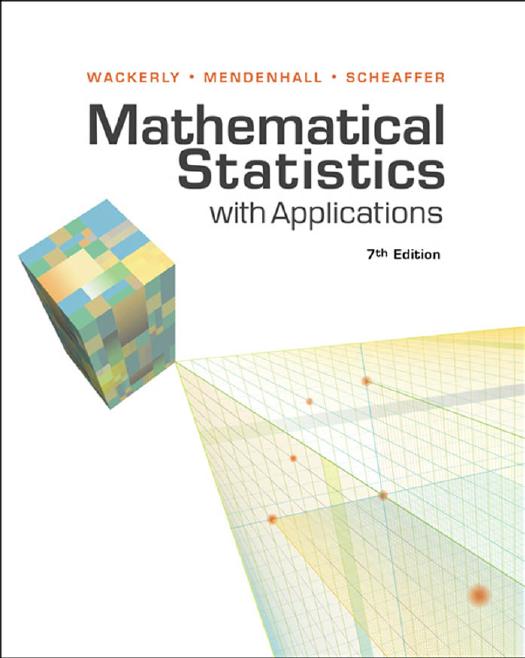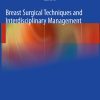Mathematical Statistics with Applications 7th Edition by Dennis Wackerly ISBN 1111798788 9781111798789
$70.00 Original price was: $70.00.$35.00Current price is: $35.00.
Instant download Mathematical Statistics with Applications 7th Edition after payment
Mathematical Statistics with Applications 7th Edition by Dennis Wackerly – Ebook PDF Instant Download/Delivery: 1111798788, 9781111798789
Full dowload Mathematical Statistics with Applications 7th Edition after payment

Product details:
ISBN 10: 1111798788
ISBN 13: 9781111798789
Author: Dennis Wackerly
In their bestselling title MATHEMATICAL STATISTICS WITH APPLICATIONS, premiere authors Dennis Wackerly, William Mendenhall, and Richard L. Scheaffer present a solid foundation in statistical theory while conveying the relevance and importance of the theory in solving practical problems in the real world. The authors’ use of practical applications and excellent exercises helps students discover the nature of statistics and understand its essential role in scientific research.
Mathematical Statistics with Applications 7th Table of contents:
Ch 1: What Is Statistics?
1.1: Introduction
1.2: Characterizing a Set of Measurements: Graphical Methods
1.3: Characterizing a Set of Measurements: Numerical Methods
1.4: How Inferences Are Made
1.5: Theory and Reality
1.6: Summary
Ch 1: References and Further Readings
Ch 1: Supplementary Exercises
Ch 2: Probability
2.1: Introduction
2.2: Probability and Inference
2.3: A Review of Set Notation
2.4: A Probabilistic Model for an Experiment: The Discrete Case
2.5: Calculating the Probability of an Event: The Sample-Point Method
2.6: Tools for Counting Sample Points
2.7: Conditional Probability and the Independence of Events
2.8: Two Laws of Probability
2.9: Calculating the Probability of an Event: The Event-Composition Method
2.10: The Law of Total Probability and Bayes’ Rule
2.11: Numerical Events and Random Variables
2.12: Random Sampling
2.13: Summary
Ch 2: References and Further Readings
Ch 2: Supplementary Exercises
Ch 3: Discrete Random Variables and Their Probability Distributions
3.1: Basic Definition
3.2: The Probability Distribution for a Discrete Random Variable
3.3: The Expected Value of a Random Variable or a Function of a Random Variable
3.4: The Binomial Probability Distribution
3.5: The Geometric Probability Distribution
3.6: The Negative Binomial Probability Distribution (Optional)
3.7: The Hypergeometric Probability Distribution
3.8: The Poisson Probability Distribution
3.9: Moments and Moment-Generating Functions
3.10: Probability-Generating Functions (Optional)
3.11: Tchebysheff’s Theorem
3.12: Summary
Ch 3: References and Further Readings
Ch 3: Supplementary Exercises
Ch 4: Continuous Variables and Their Probability Distributions
4.1: Introduction
4.2: The Probability Distribution for a Continuous Random Variable
4.3: Expected Values for Continuous Random Variables
4.4: The Uniform Probability Distribution
4.5: The Normal Probability Distribution
4.6: The Gamma Probability Distribution
4.7: The Beta Probability Distribution
4.8: Some General Comments
4.9: Other Expected Values
4.10: Tchebysheff’s Theorem
4.11: Expectations of Discontinuous Functions and Mixed Probability Distributions (Optional)
4.12: Summary
Ch 4: References and Further Readings
Ch 4: Supplementary Exercises
Ch 5: Multivariate Probability Distributions
5.1: Introduction
5.2: Bivariate and Multivariate Probability Distributions
5.3: Marginal and Conditional Probability Distributions
5.4: Independent Random Variables
5.5: The Expected Value of a Function of Random Variables
5.6: Special Theorems
5.7: The Covariance of Two Random Variables
5.8: The Expected Value and Variance of Linear Functions of Random Variables
5.9: The Multinomial Probability Distribution
5.10: The Bivariate Normal Distribution (Optional)
5.11: Conditional Expectations
5.12: Summary
Ch 5: References and Further Readings
Ch 5: Supplementary Exercises
Ch 6: Functions of Random Variables
6.1: Introduction
6.2: Finding the Probability Distribution of a Function of Random Variables
6.3: The Method of Distribution Functions
6.4: The Method of Transformations
6.5: The Method of Moment-Generating Functions
6.6: Multivariable Transformations Using Jacobians (Optional)
6.7: Order Statistics
6.8: Summary
Ch 6: References and Further Readings
Ch 6: Supplementary Exercises
Ch 7: Sampling Distributions and the Central Limit Theorem
7.1: Introduction
7.2: Sampling Distributions Related to the Normal Distribution
7.3: The Central Limit Theorem
7.4: A Proof of the Central Limit Theorem (Optional)
7.5: The Normal Approximation to the Binomial Distribution
7.6: Summary
Ch 7: References and Further Readings
Ch 7: Supplementary Exercises
Ch 8: Estimation
8.1: Introduction
8.2: The Bias and Mean Square Error of Point Estimators
8.3: Some Common Unbiased Point Estimators
8.4: Evaluating the Goodness of a Point Estimator
8.5: Confidence Intervals
8.6: Large-Sample Confidence Intervals
8.7: Selecting the Sample Size
8.8: Small-Sample Confidence Intervals for μ and μ1 − μ2
8.9: Confidence Intervals for σ 2
8.10: Summary
Ch 8: References and Further Readings
Ch 8: Supplementary Exercises
Ch 9: Properties of Point Estimators and Methods of Estimation
9.1: Introduction
9.2: Relative Efficiency
9.3: Consistency
9.4: Sufficiency
9.5: The Rao–Blackwell Theorem and Minimum-Variance Unbiased Estimation
9.6: The Method of Moments
9.7: The Method of Maximum Likelihood
9.8: Some Large-Sample Properties of Maximum-Likelihood Estimators (Optional)
9.9: Summary
Ch 9: References and Further Readings
Ch 10: Supplementary Exercises
Ch 10: Hypothesis Testing
10.1: Introduction
10.2: Elements of a Statistical Test
10.3: Common Large-Sample Tests
10.4: Calculating Type II Error Probabilities and Finding the Sample Size for Z Tests
10.5: Relationships Between Hypothesis-Testing Procedures and Confidence Intervals
10.6: Another Way to Report the Results of a Statistical Test: Attained Significance Levels, or p-Va
10.7: Some Comments on the Theory of Hypothesis Testing
10.8: Small-Sample Hypothesis Testing for μ and μ1 − μ2
10.9: Testing Hypotheses Concerning Variances
10.10: Power of Tests and the Neyman–Pearson Lemma
10.11: Likelihood Ratio Tests
10.12: Summary
Ch 10: References and Further Readings
Ch 10: Supplementary Exercises
Ch 11: Linear Models and Estimation by Least Squares
11.1: Introduction
11.2: Linear Statistical Models
11.3: The Method of Least Squares
11.4: Properties of the Least-Squares Estimators: Simple Linear Regression
11.5: Inferences Concerning the Parameters βi
11.6: Inferences Concerning Linear Functions of the Model Parameters: Simple Linear Regression
11.7: Predicting a Particular Value of Y by Using Simple Linear Regression
11.8: Correlation
11.9: Some Practical Examples
11.10: Fitting the Linear Model by Using Matrices
11.11: Linear Functions of the Model Parameters: Multiple Linear Regression
11.12: Inferences Concerning Linear Functions of the Model Parameters: Multiple Linear Regression
11.13: Predicting a Particular Value of Y by Using Multiple Regression
11.14: A Test for H0: βg+1 = βg+2 = ··· = βk = 0
11.15: Summary and Concluding Remarks
Ch 11: References and Further Readings
Ch 11: Supplementary Exercises
Ch 12: Considerations in Designing Experiments
12.1: The Elements Affecting the Information in a Sample
12.2: Designing Experiments to Increase Accuracy
12.3: The Matched-Pairs Experiment
12.4: Some Elementary Experimental Designs
12.5: Summary
Ch 12: References and Further Readings
Ch 12: Supplementary Exercises
Ch 13: The Analysis of Variance
13.1: Introduction
13.2: The Analysis of Variance Procedure
13.3: Comparison of More Than Two Means: Analysis of Variance for a One-Way Layout
13.4: An Analysis of Variance Table for a One-Way Layout
13.5: A Statistical Model for the One-Way Layout
13.6: Proof of Additivity of the Sums of Squares and E(MST) for a One-Way Layout (Optional)
13.7: Estimation in the One-Way Layout
13.8: A Statistical Model for the Randomized Block Design
13.9: The Analysis of Variance for a Randomized Block Design
13.10 Estimation in the Randomized Block Design
13.11: Selecting the Sample Size
13.12: Simultaneous Confidence Intervals for More Than One Parameter
13.13: Analysis of Variance Using Linear Models
13.14: Summary
Ch 13: References and Further Readings
Ch 13: Supplementary Exercises
Ch 14: Analysis of Categorical Data
14.1: A Description of the Experiment
14.2: The Chi-Square Test
14.3: A Test of a Hypothesis Concerning Specified Cell Probabilities: A Goodness-of-Fit Test
14.4: Contingency Tables
14.5: r × c Tables with Fixed Row or Column Totals
14.6: Other Applications
14.7: Summary and Concluding Remarks
Ch 14: References and Further Readings
Ch 14: Supplementary Exercises
Ch 15: Nonparametric Statistics
15.1: Introduction
15.2: A General Two-Sample Shift Model
15.3: The Sign Test for a Matched-Pairs Experiment
15.4: The Wilcoxon Signed-Rank Test for a Matched-Pairs Experiment
15.5: Using Ranks for Comparing Two Population Distributions: Independent Random Samples
15.6: The Mann–Whitney U Test: Independent Random Samples
15.7: The Kruskal–Wallis Test for the One-Way Layout
15.8: The Friedman Test for Randomized Block Designs
15.9: The Runs Test: A Test for Randomness
15.10: Rank Correlation Coefficient
15.11: Some General Comments on Nonparametric Statistical Tests
Ch 15: References and Further Readings
Ch 15: Supplementary Exercises
Ch 16: Introduction to Bayesian Methods for Inference
16.1: Introduction
16.2: Bayesian Priors, Posteriors, and Estimators
16.3: Bayesian Credible Intervals
16.4: Bayesian Tests of Hypotheses
16.5: Summary and Additional Comments
Ch 16: References and Further Readings
Appendix 1: Matrices and Other Useful Mathematical Results
Appendix 2: Common Probability Distributions, Means, Variances, and Moment-Generating Functions
Appendix 3: Tables
People also search for Mathematical Statistics with Applications 7th:
mathematical statistics with applications free pdf
mathematical statistics with applications freund pdf
mathematical statistics with applications freund
mathematical statistics with applications john e freund solutions
freund’s mathematical statistics with applications 7th edition solutions


